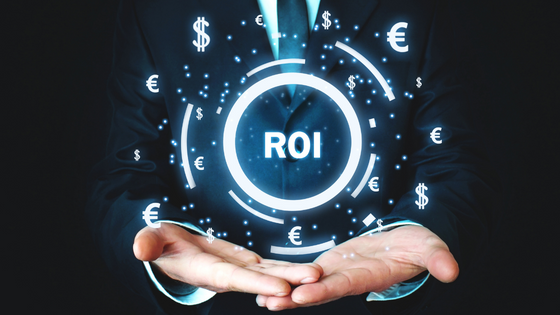The building stock is a major consumer of energy and accounts for 40% of total energy consumption in Europe. Approximately half of this consumption occurs during the design and construction phase and has to be controlled by builders, engineers, architects and other actors.
The other half occurs during the lifetime of buildings (IDAE), as they require lighting, heating, running water… Once the building is up and running, energy consumption is constant during its lifetime. Part of this consumption is necessary for a building to function normally and for users to be comfortable in a safe space.
The problem is that it can sometimes be difficult to make the distinction between necessary and superfluous energy consumption, which leads to overconsumption.
The first step to identify necessary consumption and start reducing your energy consumption is to gather data which can come from your invoices, your meters, your monitoring systems, etc. The more detailed the data is, the easier it is to interpret them and thus the better the results (and therefore, the treatment chosen for your building). Indeed, if the data is incorrect, your conclusions will be biased. This is where implementing an Energy Management System (EMS) will be of great help to your company.
Keep on reading if you are not sure to have a good understanding of how an EMS works if it would be a useful investment for your company, or if you just want to convince someone to get you started.
Barriers to Energy Efficiency
Barriers and difficulties can arise in all energy efficiency projects, and in any company that has an interest in energy efficiency. In the real estate sector the main ones we have identified are:
- The lack of data, or the availability of too much-disorganised information. Both unexistent data and excessive data can be a problem when managing your energy.
- The compartmentalised information, not shared and separated by departments or teams
- The lack of a centralised system to monitor and analyse your energy data. According to the World Economic Forum, only 9% of companies use software solutions to process and manage their data.
- Your management team or your manager, if they are not convinced of the usefulness of the efficiency measures and the return they can provide
Although you may have encountered some or even all of these obstacles there is a solution. In the following section, we detail why you should overcome these barriers and move forward with your energy efficiency project as well as how to calculate the economic performance of an energy efficiency system.
Main Benefits/Uses of an Energy Management System in the Real Estate Sector
Are you wondering what is the purpose of an Energy Management System? With the use of an EMS, you will obtain reliable and exploitable energy data from your buildings that will help you identify areas for energy savings.
Although it may seem obvious, if you do not have valid data, you will not be able to evaluate your results, the potential savings to be achieved, or the return on investment of your energy efficiency project.
In other words, here are the main uses and benefits of an EMS such as the Dexma Platform in the real estate sector:
- Understand your energy consumption to reduce your operational costs (the cost of your energy bills) and your environmental impact (emissions of polluting gases).
- Optimise your reporting processes and create customised reports and dashboards to display clear, easy-to-digest information.
- Benefit from AI insights and data for market benchmarking. In addition, this information is transformed into specific metrics to derive savings opportunities in your portfolio.
- The utilisation of Artificial Intelligence to carry out automatic anomaly detection and gain efficiency in the energy management of your assets. The technology here is of great help as it identifies inefficiencies that are difficult for the human eye to see.
Sounds good, doesn’t it?
How to Calculate the Return on Investment of an Energy Management System?
Investing in energy efficiency is paying off. But if you want to know more about the economic return you can get and how to justify the cost to your organisation… Here are the basics:
Energy Saving Potential
Imagine that the energy consumption indicated by your bills is 550,000 € per year, that the installation cost of your BMS is 20,000 €, with an annual cost of 10’000 €, and the savings potential is 85,000 €… It is obvious that in this case investing in a BMS is more than justified, don’t you think?
Well, this is a simplified scenario with fictitious data, but our customers have achieved savings of up to 25% thanks to the use of the Dexma Platform. You can get inspired by other Dexma success stories here.
Every company has the potential to save energy, regardless of their sector. The more you consume, the highest the savings potential is. The diagnosis of what these potential savings are, and the identification of energy-saving measures to be implemented are the reason why investing in an EMS will help you on your way to savings and efficiency.
Saving you Time in Report Writing
In the context of the energy crisis and the transition to a cleaner energy scenario based on renewables, emission reduction and energy savings are crucial issues for organisations. We see more and more energy managers having to prepare annual, monthly and even weekly reports on their facilities’ energy consumption, and on the reduction of emissions. In our experience, an organisation’s energy management team spends between 10% and 40% of their time compiling and writing reports, dedicated to:
- Gathering data from multiple sources (invoices, meters, spreadsheets, etc.)
- Consolidating and validating data
- Creating graphs and tables
- Compiling and writing the report
- Sending the report
All these tasks, which require several days of work, can be automated by means of an EMS, reducing the time consumed by managers and avoiding calculation errors, which is common in manual processes.In this way, the energy manager will be able to dedicate this time to something more productive: designing, implementing and supervising the energy-saving plan of their organisation, which is so important nowadays given the context of energy prices.
With an EMS like the Dexma Platform, you can track and show the data to your shareholders or customers. If your contracts or loans contain clauses related to your emissions, this tool will be of great help.
Operational Improvements to your Energy Management
Energy savings are not only obtained by turning off lights or changing thermostat settings, but also by monitoring the energy consumption of your buildings through control panels, alert systems, and measurement and verification projects, which are crucial to achieving your organisation’s energy savings targets.
It is likely that you have already reduced energy consumption in your installations but you do not see any change in your bills. It is also possible that you cannot reduce further without affecting the comfort of your users… In both cases, you have to look at your facilities and thus, the facility management team has a big role to play here. Learn how good maintenance, upgrades and repairs in your facilities contribute to better performance and lower energy demand.
In these cases, the possibility of relying on an EMS for the continuous monitoring of your installations is key, using the following tools:
- Real-time alert system: receive notifications in real-time when the energy consumption of your buildings exceeds certain thresholds or deviates from its expected behaviour. Avoid surprises such as air conditioning systems on at the weekend, or lighting systems on during the day.
- Dashboards: centralise the key energy performance parameters of your buildings, and share them on screens, websites, or mobile devices to raise awareness among your team, and identify deviations or unnecessary consumption.
- Anomaly detection: take advantage of artificial intelligence models to detect anomalies in consumption, and receive notifications when buildings behave unexpectedly, taking into account environmental parameters and holidays.
- Measurement and verification: keep detailed track of the savings provided by the energy-saving measures implemented by your organisation, facilitating the calculation of the consumption baseline, and comparing the energy consumption with the expected one in real time.
These tools, as well as many others available in an EMS, will allow you to achieve greater energy savings and save your energy management team time, thus increasing your operational efficiency exponentially. If you want to start calculating your energy budget and return on investment, use our Excel template to calculate your energy budget and ROI.
Other Indirect Benefits of an Energy Management System
In addition to the three points seen above, implementing an EMS can have benefits beyond direct energy and economic savings:
Transparency with your Stakeholders
Providing energy consumption data, savings strategies and results is a gesture to your investors, customers and tenants. Many companies commit to becoming “greener” but do not track these emissions. How to justify these words without measuring real data? With an EMS like the Dexma Platform, you can track and show the data to your shareholders or customers. If your contracts or loans contain clauses related to your emissions, this tool will be of great help.
Reputation and Coherence
Energy consumption is a part of the sustainability and ESG strategies of organisations. Of these, energy is the “easiest” to measure, as it is about concrete data and not interpretations. With an energy management system, you can control your consumption in detail and share the necessary data.
Including your energy savings plan in your overall Corporate Social Responsibility or ESG plan is a public sign that your company is committed to saving energy. This can be a determining factor when it comes to signing a lease or purchase agreement for your premises, getting a loan or hiring new employees.
Compliance with Existing Regulations
In our free–to-download guide, we compiled the Energy and Sustainability regulations that can affect your company. Have a look at it so you can stay up to date with the energy and environmental laws
And there’s more, if you’ve been thinking about getting the ISO 50001 Standard, having an EMS and energy management processes in place will help you get a lot of the work done.
Now that you have seen that an energy management system is an investment that will help you save money and be more sustainable in the medium and long term, why not get started with your project?
Contact us if you still have any questions about the usefulness of the EMS or for more details on how Dexma can help you.
And if you want to learn more about Dexma and our team, watch the recording of our annual energy event Dexma Day 2022, where we will talk about energy efficiency, what’s new on the Platform and how to help you become more efficient and save money. ⬇️




